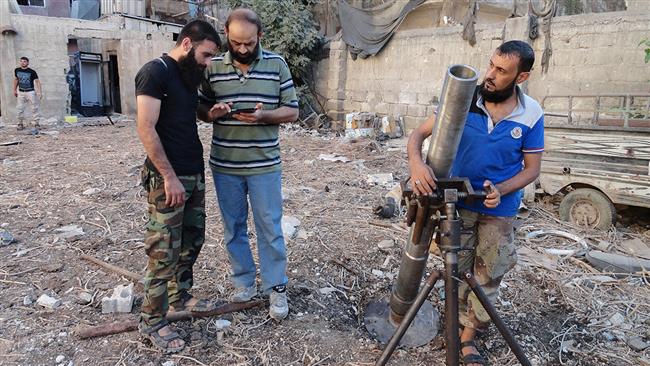29 Syrian civilians injured in militant mortar attacks

At least 29 people have been injured in two separate mortar attacks by foreign-sponsored militants against residential areas on the outskirts of Syria’s capital, Damascus.
A police source, speaking on condition of anonymity, said 22 civilians sustained injuries when shrapnel from two mortar shells struck as many buses in the city of Harasta, located about 25 kilometers (15 miles) northeast of the capital, Damascus, on Tuesday, Syria’s official SANA news agency reported.
The vehicles were transporting medical staff from the city’s al-Bayrouni University Hospital when they came under attack.
Separately, militants fired mortars at the al-Wafideen refugee camp, located 24 kilometers (15 miles) northeast of the capital, leaving seven people injured.
Takfiri ISIL militants also launched five mortar rounds on al-Mufti neighborhood in the northeastern Syrian city of al-Hasakah, though there were no reports of casualties. The projectiles caused damage to several houses and buildings at the residential area.
Cities and towns across Syria have suffered bomb attacks as well as mortar and rocket fire by Takfiri terrorists since conflict broke out in the Arab country more than four years ago.
The conflict in Syria, which started in March 2011, has reportedly claimed more than 230,000 lives up until now.
The violence has also forced over 3.8 million Syrians to take refuge in neighboring countries, namely Jordan and Lebanon. More than 7.2 million others have been displaced within Syria, according to the United Nations.







